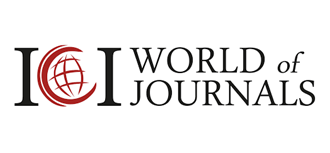
Lupine Publishers Group
Lupine Publishers
Menu
ISSN: 2643-6736
Short Communication(ISSN: 2643-6736) 
Some Issues Concerned with PMU-Based Security Control of Electric Interconnected Systems Volume 1 - Issue 4
Patricio Robles*
- Patricio Robles Calderón, Ingeniero Civil Electricista, Magister en Física,Chile
Received:January 22, 2019 Published: January 25, 2019
*Corresponding author: Patricio Robles, Electrical Engineering School-Pontifical Catholic University of Valparaíso, Chile
DOI: 10.32474/ARME.2019.01.000119
Abstract
The increasing consumption of electrical energy requires higher capacity both in generation as in transmission of electric power and expansion of the networks, including interconnection of systems and High Voltage Direct Current (HVDC) links operating in parallel with Alternating Current Circuits (AC). This reinforces the requirement of having reliable wide area control schemes for obtaining an adequate dynamic security. During last years synchronized phasor measurements as part of a Wide Area Measurement System (WAMS) and Wide Area Monitoring, Protection and Control (WAMPAC) have been incorporated in electric systems of several countries becoming an important component for monitoring, control and protection. Phasor measurement units (PMUs) facilitate the realization of several wide-area actions of control. One of them is to keep the equilibrium between the demanded and available power, in particular under sudden disconnections of generation or load. Among the other actions that can be supported by these systems, one very important for the dynamic security of one electric system is the control of electromechanical oscillations helping to prevent system-wide instabilities and blackouts. This short communication provides a conceptual insight on some applications of synchrophasor measurements as a valuable tool for improving the effectiveness of these kind of control actions and therefore the dynamic security of electric systems.
Keywords: Transmission System; Monitoring; Control; Protection; Voltage; Frequency; Power; Stability; Dynamic Security; Synchrophasor.
Abbreviations: HVDC: High Voltage Direct Current; WAMS: Wide Area Measurement System; WAMPAC: Wide Area Monitoring, Protection and Control; FACTS: Flexible Alternating Current Transmission Systems.
Introduction
Electric Power system automation includes monitoring, evaluation, analysis, and control of processes associated with generation and transmission of electric energy from power stations to customers [1]. Power system state estimation with online and synchronized phasor measurements plays a key role in the energy management systems (EMS) providing instantaneous values of the electrical variables in the grid that are further used in functions such as contingency analysis, automatic generation control, load shedding and on-line evaluation of the security of the system, among others. In this brief communication a conceptual insight about these concepts is given, in particular those related with load shedding and islanding of power systems under extreme conditions.
Use of WAMS and WAMPAC based on synchrophasor measurements allows simultaneous data acquisition from several points of large systems, enhancing the real-time knowledge of the operators about the state of the system. This makes possible to take corrective actions before the system undergoes a critical condition that could lead it to a blackout [2]. For instance, simultaneous measurements of the phase of voltage in distant substation buses and register of the corresponding differences, allow the opportune beginning of control actions such as variation of the injected reactive power, changes in power flows by means of FACTS and generators redispatch [3]. The occurrence of severe contingencies such as sudden disconnections of important blocks of generation or transmission circuits, can produce a great imbalance between generation and demand of power with the risk of leading the system to a condition of instability of the frequency and the voltages. In these conditions remedial actions are rapidly required as for example load shedding and eventually the islanding of the system. Controlled islanding is an action required when the system is prone to reach a critical condition where severe cascade contingencies can occur and it is not possible to keep its integrity. In this condition the system must be separated in smaller subsystems called electrical islands. Three important problems that must be considered in controlled separation are where and when separate the interconnected system and identify the actions after separation. Different methods have been proposed in the technical literature to determine possible splitting strategies. For instance reference [4] proposes a splitting strategy carried out by opening the transmission lines with minimum power exchanged between areas, so that strong connected islands are created, transient oscillations between areas are reduced, and better load-generation balance is obtained in the islands.
Related with load shedding, traditional schemes are based on a function incorporated in numerical protection devices that according to the measured values of the instantaneous frequency f(t) and its corresponding rate of variation df/dt in a specific substation, emit signals for locally disconnecting selected blocks of load. With a WAMPAC this function can be more effective since the above values can be measured simultaneously at different points in the network and by means of appropriate algorithms the precise amount of load to be shed and the adequate location can be automatically determined allowing a faster recovery of the frequency. This increases the dynamic security of the system under severe disturbances affecting the equilibrium between generation and demand of active power. At a point of the network denoted by the index i where dfi/dt is measured, the imbalance of active power can be expressed as
Δpi = (2Hi/fn)dfi/dtwhere n f is the nominal frequency and Hi, fi are the inertia constant of the equivalent generation concentrated at this point and the representative instantaneous value of the frequency, respectively. These local measurements of imbalance can be sent to a centralized processor where by means of adequate software the amount and sites for disconnecting load or generation are determined [5]. An scheme of this type is advisable for a region where several industrial processes are concentrated requiring a highly reliable supply of electrical energy minimizing the curtailed load under a sudden decrease of the frequency.
Due to the increase in the injections of electric power generated from renewable energy sources and interconnections between grids of neighbour countries, large and complex transmission systems are needed for obtaining a robust, flexible and secure operation of future power systems and the trend is towards the operation with hybrid AC/DC systems. According with ref [6] for these systems modal analysis, in particular eigenvalues, mode shapes, and participation factors, can be used to identify and analyze interactions between different subsystems. These interactions are due to the dynamic coupling between AC and DC grids. The intergrid electromechanical interactions depend on DC grid control strategy, controllers tuning and damping of electromechanical modes. In general, for an hybrid AC/DC system these modes are a combination of the modes in the individual AC grids and those related to the DC grid, converters and their controllers. In hybrid AC/DC systems PMU and WAMS technology can also provide a valuable tool for the operation, with applications as the above mentioned and in particular for the state estimation [7].
Conclusion
In this brief letter we have given a conceptual insight about some possible applications of WAMS and WAMPAC for improving the effectiveness of control actions under perturbations that could lead an electric power system to instability. Some of them are Controlled Islanding and Centralized Load Shedding Schemes based on synchrophasor measurements, that can contribute to minimize the curtailed load allowing a fast recover of the frequency under sudden loss of generation or transmission capacity. A short discussion is included in relation with the application of WAMS for hybrid AC/DC systems, subject which is matter of current research.
Acknowledgement
The author thanks to the Electrical Engineering School of the Pontifical Catholic University of Valparaíso, Chile.
References
- Joseph Richard, Nerey Mvungi (2014) Concept of Automation in Management of Electric Power Systems. International Journal of Electrical and Computer Engineering 8(12): 1849-1853.
- Hjörtur Jóhannsson, Markus Wache (2013) System security assessment in real-time using synchrophasor measurements. Proceedings of 2013 IEEE PES Innovative Smart Grid Technologies, Denmark.
- Sarai Mendoza Armenta, Ian Dobson (2015) Applying a Formula for Generator Redispatch to Damp Interarea Oscillations Using Synchrophasors. IEEE Transactions on Power Systems 31(4): 3119- 3128.
- Honglei Song, Junvong Wu, Kui Wu (2014) A Wide-Area Measurement System-Based Adaptive Strategy for Controlled Islanding un Bulk Power Systems. Energies 2014(7): 2631-2657.
- Sweeti jain, Manoj Gupta (2015) Adaptive under frequency load shedding using synchrophasor measurement. International Journal of Research Article 2(8): 2348-6848.
- (2017) Atsede Gualu Endegnanew, Stability Analysis of High Voltage Hybrid AC/DC Power Systems. Thesis for the Degree of Philosophiae Doctor, Trondheim. Norwegian University of Science and Technology, Faculty of Information Technology and Electrical Engineering, Department of Electrical Engineering.
- Wei Lu (2018) PMU-based State Estimation for Hybrid AC and DC Grids, Doctoral Thesis. KTH Royal Institute of Technology, School of Electrical Engineering and Computer Science. Department of Electric Power and Energy Systems, Stockholm, Sweden.

Top Editors
-

Mark E Smith
Bio chemistry
University of Texas Medical Branch, USA -

Lawrence A Presley
Department of Criminal Justice
Liberty University, USA -

Thomas W Miller
Department of Psychiatry
University of Kentucky, USA -

Gjumrakch Aliev
Department of Medicine
Gally International Biomedical Research & Consulting LLC, USA -

Christopher Bryant
Department of Urbanisation and Agricultural
Montreal university, USA -

Robert William Frare
Oral & Maxillofacial Pathology
New York University, USA -

Rudolph Modesto Navari
Gastroenterology and Hepatology
University of Alabama, UK -

Andrew Hague
Department of Medicine
Universities of Bradford, UK -

George Gregory Buttigieg
Maltese College of Obstetrics and Gynaecology, Europe -

Chen-Hsiung Yeh
Oncology
Circulogene Theranostics, England -
.png)
Emilio Bucio-Carrillo
Radiation Chemistry
National University of Mexico, USA -
.jpg)
Casey J Grenier
Analytical Chemistry
Wentworth Institute of Technology, USA -
Hany Atalah
Minimally Invasive Surgery
Mercer University school of Medicine, USA -

Abu-Hussein Muhamad
Pediatric Dentistry
University of Athens , Greece

The annual scholar awards from Lupine Publishers honor a selected number Read More...










